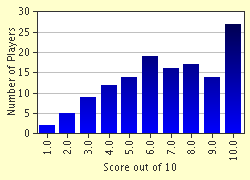Quiz Answer Key and Fun Facts
1. One of the earliest reference books still in regular use is Cruden's "Concordance". It will help you to find your way around which text?
2. In one of my civil service jobs, my tasks included looking at the daily editions of Hansard. What is reported in Hansard?
3. What can be found in the reference book that bears the name of Burke?
4. I've lost touch with an old friend, and I wonder where he is now, so I look for his details in Crockford's. What is my friend's profession?
5. In one of his essays, the Victorian novelist Samuel Butler condemned book-collecting. He reckoned that the works of Webster, Whitaker and Bradshaw were sufficient for anyone's library. Webster's, of course, is a dictionary and Whitaker's is an annual British almanac; but what would Butler have found in the pages of Bradshaw?
6. For some of us, the coming of the English spring is marked not by the sight of daffodils or the calls of cuckoos, but by the appearance of Wisden in the windows of bookshops. What sport does Wisden deal with?
7. I am going to take a short holiday in an unfamiliar part of England, and I pack a copy of Pevsner's volume on the county. How do I intend to spend my holiday?
8. Sir George Grove was a Victorian civil engineer, but he had other interests as well. In the 1880s he published the first edition of what has become the most comprehensive reference work on which subject?
9. "A Dictionary of Modern English Usage," first published in 1926, was probably the most influential book in its field in twentieth-century Britain. It is often referred to by the name of its compiler. Who was he?
10. If you want to know the biggest, smallest, fastest, most expensive, best-selling, most disastrous or generally most superlative example of anything, you might consult a Book of Records associated with a famous brewery. Which brewery?
Source: Author
TabbyTom
This quiz was reviewed by FunTrivia editor
agony before going online.
Any errors found in FunTrivia content are routinely corrected through our feedback system.


